Concurrent Sessions V | April 30 | 11:30 AM – 1:00 PM
Session 5.1 A
NEPA | Upstream and Downstream Analysis in NEPA After Seven Counties
11:30 AM – 12:00 PM
| About the Presentation |
|
This session will explore the Seven County Infrastructure Coalition vs. Eagle County (Seven Counties) US Supreme Court Case concerning upstream and downstream analysis in NEPA and which will be heard by the Supreme Court in December 2024. The issue at hand is whether the NEPA requires an agency to study environmental impacts beyond the proximate effects of the action over which the agency has regulatory authority. The plaintiffs argue that only a narrow approach is required that corresponds only to the immediate effects within the federal agency's jurisdiction. Others argue that when there are reasonably foreseeable upstream or downstream effects of a project, particularly for fossil fuel projects, that NEPA should require their disclosure.
The Supreme Court decision could substantially limit the consideration of upstream and downstream effects or could clarify when such an analysis is required or not. Given the makeup of the current court, it is likely that a narrowing of NEPA could result. If the case has been decided by the NAEP conference, this session will discuss the court's decision and its implication for NEPA. If it has not been decided, then this session will review the issues at play, the arguments of the different parties, and the potential implications for NEPA. This session will be useful for NAEP conference attendees who are NEPA practitioners and also of interest to environmental planners in general interested in how our national environmental disclosure law is being interpreted these days.
Learning Objectives
The goal of the session is to promote understanding of the implications of the Seven Counties Supreme Court case on NEPA practice regarding the scope of NEPA analysis, including upstream and downstream analysis for energy projects and all projects. The session will provide examples of potential changes in analysis resultant from the ruling, including climate change, air quality, biological resources, and water resources. The session will also discuss options to address the desire for "one federal document" if each federal agency only narrowly needs to look at proximate causes of impacts within its own jurisdiction.
|
| About the Speaker(s) |
|

|
Rich Walter
Vice President, Environmental Planning
ICF
Rich Walter has 32 years of experience in environmental planning, compliance strategy, permitting, and mitigation development and implementation. He has directed and participated in environmental impact assessment, alternatives analysis, and permitting processes for a variety of proposed infrastructure and developments including commuter, intercity, and high-speed rail; roadways, bike lanes, and pedestrian improvements; residential, commercial, and mixed use development; water, flood, energy, and communications infrastructure; General Plans, Specific Plans, and Climate Action Plans; and many others. He has completed NEPA engagements with many federal agencies including BLM, FAA, FERC, FTA, FHWA, FRA, NPS, USA, USACE, and USFWS.
|
Session 5.1 B
Energy | Emerging Fuel Technologies: What Environmental Professionals Need to Know
12:00 PM – 1:00 PM
| About the Presentation |
|
Since the energy crisis of the 1970s, there has been increased awareness of dependence on foreign oil and interest in alternative energy sources. Energy developers, producers, and governments are exploring application of a wide variety of emerging fuel technologies that could replace fossil fuels including hydrogen, renewable natural gas (RNG), biodiesel, renewable diesel, small modular reactors, fusion, and more. This panel will discuss the emerging fuels market in terms of emerging fuel technologies, market drivers and the challenges of implementing these types of projects, and considerations for permitting and regulatory compliance for these projects. The panel will discuss agency efforts to spur development of alternative fuels, how projects are being evaluated under NEPA, and various permitting considerations. The regulatory and physical infrastructure to produce alternative fuels are being proposed at federal, state, and local levels.
As the science and technology of alternative energies evolves, so do the unique issues to consider when evaluating potential environmental impacts during permitting and environmental review. Each state in the United States has an Energy Office that is funded by the US Department of Energy's State Energy Program (SEP). The Energy Office serves as the principal energy planning entity for a state. Our panelist, Sara Bazemore, Director of the South Carolina Energy Office, will provide an overview of the South Carolina Energy Office and their engagement, adaptation and advancement of emerging fuels technologies in energy planning. The South Carolina example will illustrate the function of Energy Offices across the U.S. The panel will encourage audience participation, and we look forward to a lively discussion about the evolution of the emerging fuel technologies and understanding them in the context of the environmental professions. We selected the Renewable Energy track, but this panel could apply to several other tracks including NEPA Practice, South Carolina, Climate Change, and Transportation.
Learning Objectives
Provide state of the practice information about emerging fuel technologies. Provide information about what the South Carolina Energy Office is planning with respect to emerging fuels, as an example applicable in other states. Discuss some of the unique challenges and best practices for environmental practitioners who are conducting environmental reviews of emerging fuel technology projects.
|
| About the Speaker(s) |
|
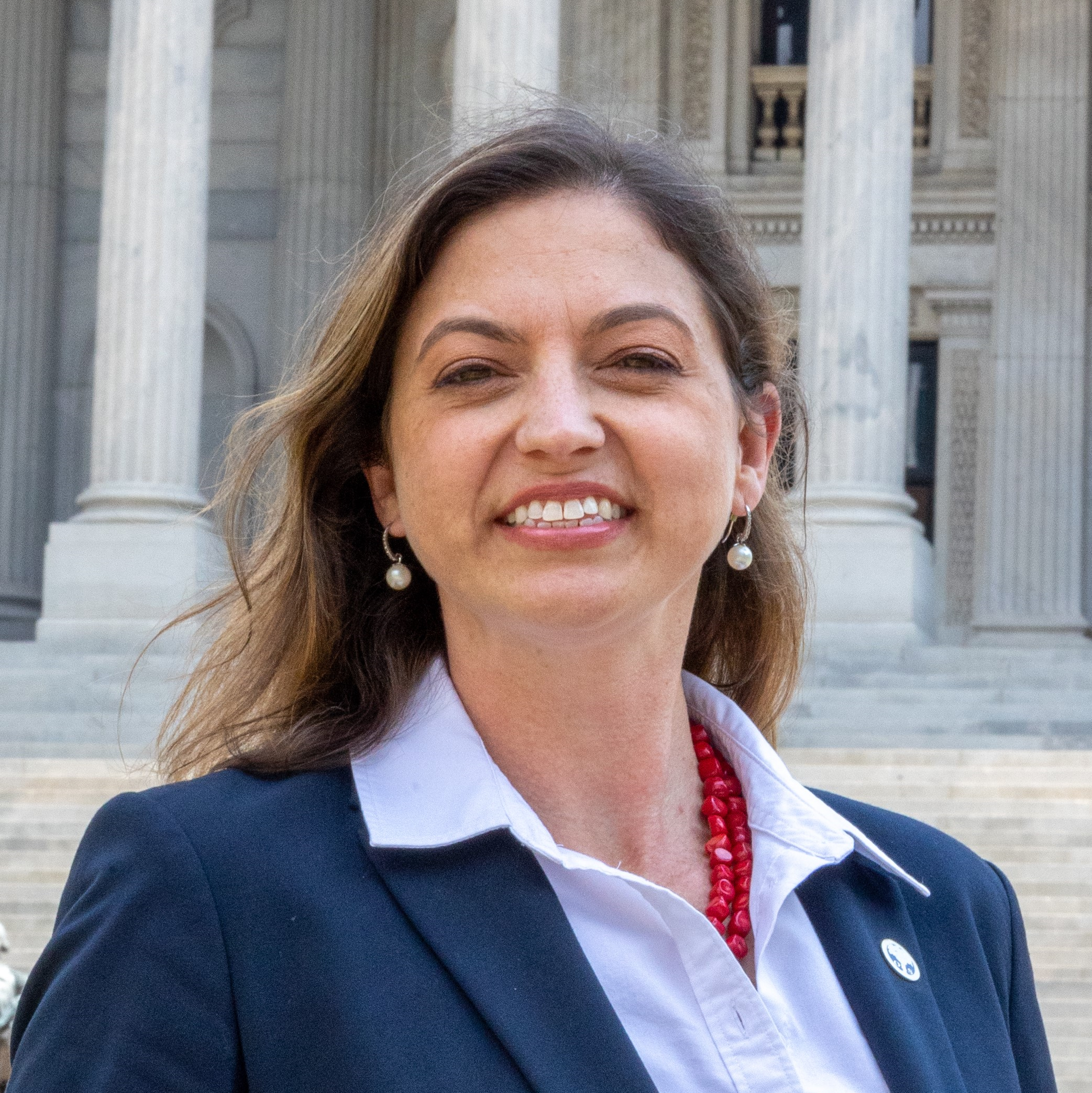
|
Sara Bazemore
Director, State Energy Office
South Carolina Office of Regulatory Staff
Sara Bazemore serves as the Director of the State Energy Office within the South Carolina Office of Regulatory Staff, leading efforts to advance energy efficiency, renewable energy, and clean transportation. Her team is dedicated to enhancing environmental quality and optimizing energy conservation, while minimizing the cost of energy statewide. Before joining the Energy Office, Sara practiced environmental and regulatory law for over 15 years, representing clients on matters related to the Clean Air Act, Clean Water Act, coastal law, and CERCLA in various judicial forums, including the State Supreme Court and Court of Appeals. She also directed the SC Coastal Zone Management program. Sara holds a BS in Marine Science and dual degrees—Master of Earth and Environmental Resources Management and Juris Doctor—from the University of South Carolina, where she now teaches Energy Law and Environmental Law as an adjunct professor. Honored with the Algernon Sydney Sullivan Award from USC, she also earned a Certificate of Biblical Studies from Columbia International University.
|
|

|
Rona Farley, AICP, CEP, PMP
Senior Professional Associate, Resources Environmental Director
HDR
Rona is a senior environmental project manager at HDR with 20 years of experience managing multi-disciplinary teams for a wide variety of projects for both public and private clients. She has managed the environmental review process for complex and high-profile projects in the Pacific Northwest and served as environmental manager for the SR 520 Bridge Replacement Program. Rona is a Project Management Professional (PMP) certified by the Project Management Institute (PMI). She served as President of the National Association of Environmental Professionals (NAEP) (2021-2023) and is a Certified Environmental Professional (CEP) by the Academy of Board Certified Environmental Professionals. She holds certification from the American Institute of Certified Planners (AICP) and is a member of the American Planning Association. She has been recognized by HDR as a Senior Professional Associate for her commitment to quality and technical excellence. Rona is the Environmental Director for HDR's Power, Industrial, and Waste Sectors.
|
|
|
Malia Bassett, AICP
Senior Environmental Planner
HDR
Malia is a multi-disciplinary professional with over fifteen years of experience in the practice of infrastructure planning and permitting with an environmental nexus. Malia is leading document analysis, assisting the Washington Department of Ecology in preparation of the Programmatic Environmental Impact Statement (SEPA) for the development of safe and equitable future green hydrogen energy projects in Washington.
|
 |
Leandra Cleveland, PWS
Industrial ES&P Leader
HDR
Leandra is a biologist and planner with considerable experience in environmental compliance permitting; wetland delineations and function assessments; habitat mitigation and enhancement plans; mitigation monitoring; and preparing NEPA/SEPA documents. She understands the complexities of aquatic and terrestrial ecosystems as well as state and federal permitting and regulatory requirements. Leandra's expertise brings an effective framework to support the natural resource goals of project design.
|
Back to Top
Session 5.2 A
Biological Resources | There's Something in the Water: 6PPD-q and NEPA in Washington State
11:30 AM – 12:30 PM
| About the Presentation |
|
Water quality plays a key role in supporting healthy salmon runs. A newly-identified pollutant of concern has emerged as an acute aquatic toxicant to some salmon species throughout the world. Scientists in the state of Washington recently identified the chemical 6PPD-quinone (or, 6PPD-q) as that threat. 6PPD-q is a variant of 6PPD, a chemical added to rubber tires to reduce tire wear. Tire wear particles containing 6PPD-q are transported from roads, parking lots, and other impervious surfaces to surface waters via stormwater. 6PPD-q has also been detected in airborne particles, sediment, soils, and rubber products other than tires. Studies have shown that 6PPD/6PPD-q has been killing Coho Salmon (Oncorhynchus kisutch) in Washington urban streams for decades, and once exposed to 6PPD-q in very small amounts, the onset of mortality can be rapid. Varying levels of toxicity have been observed for other salmonids such as Chinook salmon and steelhead, protected in Washington State under the Endangered Species Act (ESA) by the National Marine Fisheries Service (NMFS). Since the discovery of 6PPD-q, NMFS has substantially changed its approach to ESA consultation on stormwater effects for these salmonid species, critical habitat, as well as to other ESA-protected species such as Southern resident killer whale.
NMFS has determined that long-term stormwater runoff due to new and replaced pollution-generating impervious surfaces (PGIS), even with stormwater treatment, causes lethal and sublethal toxicity to exposed ESA-listed fish and degrades critical habitat. Further, the persistence of 6PPD-q in stormwater, even post-treatment, has resulted in NMFS requiring aquatic action areas to extend up to several miles downstream of project site to evaluate the furthest extent of effects due to 6PPD-q. The combination of lower thresholds for take to occur due to stormwater, and more expansive aquatic action area, has resulted in a significant increase in formal ESA consultations for projects with new and replaced PGIS in Washington. In turn, this has caused significant schedule and design impacts to capital projects that require NEPA review for federal permitting and/or federal funding. This presentation will briefly summarize the state of the science of 6PPD-q, current best available science for stormwater treatment, on-the-ground regulatory implications for projects requiring federal consultation under the Endangered Species Act, and case studies of how we have navigated the issue on a range of federal actions requiring NEPA review in Washington State.
Learning Objectives
By the end of the session attendees will:
- Have a basic understanding of 6PPD-q is, its source, and how it harms fish, and which regional agencies are currently responding to this issue.
- Gain knowledge on stormwater technologies and BMPs that are in the works to address the problem.
- Have analytical tools to navigate the issue relative to Endangered Species Act for Section 7 consultations for projects that include new or replaced pollutant-generating impervious surfaces (PGIS) in Washington State.
- Understand strategies are we using with our clients in Washington State to mitigate NEPA review delays due to the shifting 6PPD-q regulatory framework.
|
| About the Spekaer(s) |
|

|
Lisa Danielski, PWS
Senior Professional Associate - WA Environmental Sciences and Planning Business Class Lead
HDR Engineering
Lisa has over 25 years of experience in environmental review and permitting for infrastructure and ecological restoration projects in the Pacific Northwest. Lisa’s career started in wetland, aquatic and terrestrial habitat studies, and has expanded to include NEPA documentation, Endangered Species Act compliance, Clean Water Act permitting, as well as state and local environmental review and permitting in Washington and Oregon. She is a project manager for NEPA documentation and other environmental services for clients such as WSDOT and Bureau of Reclamation. Lisa also serves as environmental and permitting lead on a range of design projects from flood hazard protection to power transmission and distribution. She is honored to lead a team of talented environmental scientists and planners throughout Washington State. Lisa is recognized as a Senior Professional Associate at HDR.
|
|

|
Becky Holloway, CEP
Environmental Scientist
HDR Engineering
Becky is the national Aquatic Sciences lead for the HDR Fisheries Business Class with a background in marine and aquatic sciences. For over 27 years, she has conducted aquatic habitat surveys and prepared environmental compliance documents for fisheries-related projects throughout the western U.S. She specializes in ESA Section 4d, 7 and 10 consultations, and prepares Essential Fish Habitat Assessments, NEPA documents, stream functional assessments, technical reports, and other permitting documents (SEPA/NEPA checklists, JARPA etc.). She has written or supervised the development of a wide variety of ESA consultation documents throughout the western U.S., Guam, and Alaska, many of which have required an analysis of the effects of instream work on aquatic species, including dredging, flow alteration, underwater sound, and genetic and ecological effects on ESA-listed fish resulting from interactions with hatchery-origin fish. She is excited to stay abreast of all things ESA-related to facilitate the delivery of projects throughout the country.
|
Session 5.2 B
Biological Resources | Federal Preemption, When and How to Use It
12:30 PM – 1:00 PM
| About the Presentation |
|
Does a railroad have to comply with state wetland regulations? What about water quality standards? How about local and state construction requirements? How do railroads determine when it is best to invoke federal preemption and when it is better to play nice in the sandbox? This presentation will provide a background in federal preemption as it applies to environmental regulations and give examples via specific projects on how to enact federal preemption and when it works well for a project. Canadian National is a Class I freight railway headquartered in Montreal and within the US, operates within the midwestern and southern states. As CN has grown their network, they have encountered state and local environmental regulations that could be construed as duplicative or time consuming to federal regulations. HDR, together and with other engineering and environmental consulting firms, has assisted CN in successfully navigating this permitting environment. In Two Harbors, Minnesota, CN successfully used the federal preemption clause to exempt out of local environmental regulations, as those regulations were viewed as redundant to the NEPA requirements already being enforced by the lead federal agency. At the onset of the regulatory process, CN Environment consulted with CN Legal and Public Affairs and subsequently respectfully notified the local regulatory agency that CN would be operating under federal preemption and would defer from obtaining approval under their local ordinances. It was found that the project complied with the intent of the state and local regulations and moved forward smoothly, obtaining the proper federal permits as required.Michigan is one of three states and was the first state to have received authorization from the federal government to administer the federal wetland program. Michigan Environment, Great Lakes, and Energy (EGLE), the state environmental regulatory agency, oversees wetland regulations within the state, unless the project directly discharges to a Great Lake. CN has successfully executed several projects in the state, navigating the federal permitting process as administered by Michigan EGLE.This presentation will provide an overview and brief history of the federal preemption afforded to railroads, provide examples of projects that have used it and not, and provide a rationale for when it is appropriate. Through looking at various projects, the audience will gain insight on when and how preemption can be applied.
Learning Objectives:
- for the audience to learn the basic history of railroad regulations
- for the audience to understand the context of federal pre-emption, when it should be used, and how it should be used
|
| About the Speaker(s) |
|

|
Andrea Cline, PWS, CPESC
Senior Environmental Scientist
HDR
Andrea is a biologist and planner with experience in environmental site assessment and permitting. Her experience focuses primarily on wetland delineations, threatened and endangered species consultation, mitigation, and preparing NEPA documents. She also worked on many water quality projects over the years, developing watershed plans and working to implement green infrastructure practices and monitoring plans to assist in the development and implementation of clean water goals. Andrea has experience in NPDES permitting, having worked to develop audit systems to assess compliance, as well as permit applications, site visits, and operation and maintenance plans.
|
Back to Top
Session 5.3 A
Energy | The Public Turns Up the Heat: A Hawaii Geothermal Example
11:30 AM – 12:00 PM
| About the Presentation |
|
Hawai’i's geographic isolation has historically required the State to import fuel resources to meet its energy needs for both transportation and electricity generation, of which currently approximately 70 percent of the statewide needs are met by imported fossil fuels. This dependence contributes to Hawai’i having the highest average electricity retail price of any state and nearly triple the United States average rate. In an effort to reduce the State's dependence on fossil fuels, the State of Hawai’i has set a goal of reaching 100 percent renewable energy by 2045. Geothermal energy production plays an important role in the renewable energy mix for the State of Hawai’i, especially on Hawai’i Island where geothermal energy has provided up to 30 percent of energy delivered to the island grid. All this geothermal energy is produced by one private facility in the southeastern part of Hawai’i Island which has been in operation since 1993.
When this producer came before the Public Utilities Commission to amend their power purchase agreement to increase production through equipment upgrades (the project), the PUC's position was that heat extracted from the geothermal fluid beneath the site is "State land" and triggered the State of Hawai’i's environmental review, commonly referred to as the Hawai’i Environmental Policy Act (HEPA) process, requiring an Environmental Impact Statement (EIS) be prepared. Although the project has contributed to the production of reliable renewable energy and cost savings to island residents for almost three decades, there was loud local opposition. Opponents of the project used the HEPA EIS process as a fresh opportunity to challenge geothermal energy and operation of the plant itself, resulting in over complex 1,000 unique public comments on the Draft EIS.
The team faced several challenges in the preparation of the EIS, including the following: communicating to the public the difference between the project (equipment upgrades for increased power generation) and the already permitted and operating facility; combatting misinformation, alternative facts, and skepticism about the science behind the analysis and the mechanics of geothermal power generation; communicating the State regulatory trigger for environmental analysis and navigating concerns around analysis and management of natural disasters (such as volcanic eruptions and their aftermath); NIMBY-ism (Not In My Backyard); and concerns expressed by Native Hawaiian cultural practitioners about the appropriateness of treating Pele, the volcano deity, as a resource to be extracted for profit. This presentation provides a summary of how these challenges were faced, from public scoping through publication of the Final EIS, and lessons learned during the EIS process.
Learning Objectives
- Public participation
- Renewable energy
|
| About the Speaker(s) |
|

|
Michele Lefebvre, B.A. Biology - Boston University, Ph.D. Biology - University of Utah
Senior Project Manager
Stantec Government Services, Inc.
Dr. Lefebvre's professional experience includes the management, organization, analysis, and writing required for the preparation of NEPA documents, and documents pursuant to Chapter 343, Hawai’i Revised Statutes, and Chapter 11-200.1, Hawai’i Administrative Rules (also known as "HEPA") including EAs and EISs. Her experience includes: coordinating with the agencies and applicants; managing internal teams; managing subconsultants; coordinating baseline data collection; identifying project alternatives; coordinating with agency resource specialists for impact analysis; preparing the documents; coordinating map and figure creation; responding to agency and public comments; ensuring electronic documents complied with the Americans with Disabilities Act requirements; and finalizing documents.
|
|
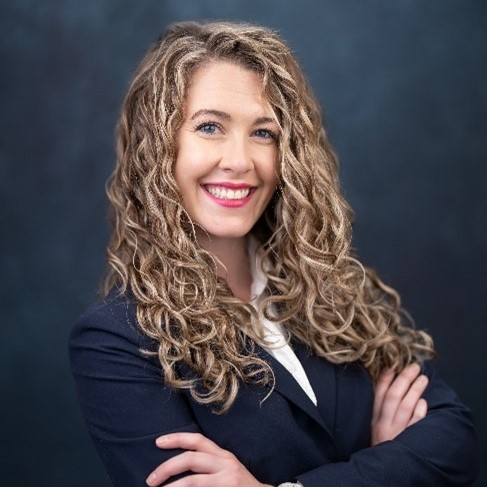
|
Shelby White, M.S, Geography, University of Nevada, Reno, B.S., Earth Sciences, Oregon State University
Senior Project Manager
Stantec Consulting Services, Inc.
Shelby White is a Senior Project Manager with over 7 years' experience in the project management and compliance realm. She is responsible for the preparation of NEPA documents and overseeing pre-permitting planning efforts in a variety of development sectors (including renewable energy, transmission and distribution, and mining) primarily in the southwestern United States. Shelby has knowledge and expertise in western water resources management and enjoys consulting on tasks related to water management and policy issues. She regularly engages in meaningful coordination with numerous federal, state, and local permitting agencies and enjoys problem solving alongside agencies, clients, and public participants in the complex world of environmental permitting.
|
Session 5.3 B
Energy | Geothermal and Utility Planning and Permitting: Mayo Clinic's Infrastructure
12:00 PM – 12:30 PM
| About the Presentation |
|
Mayo Clinic in Rochester is embarking on its largest infrastructure project in Minnesota history. The utility infrastructure expansion is a multiyear project advancing Mayo Clinic's strategic initiative to Cure, Connect and Transform healthcare for the benefit of patients everywhere. Mayo Clinic is expanding the current underground infrastructure system in over 30 blocks of downtown Rochester, Minnesota, as well as expanding one of its three utility power plants.
Two key efforts are included in the infrastructure project: 1) installation of an open loop geothermal exchange system and 2) installation of duct bank to expand the electrical grid. These efforts will support nearly two million square feet of new facilities that will provide a combination of innovative care concepts and digital technologies intended to enhance collaboration across specialties, improve patient satisfaction and experience, and help transform specialty and complex care at Mayo Clinic.
Learning Objectives
- Learn about Mayo Clinic's major infrastructure project to support a nearly two-million-square-foot expansion.
- Understand planning and permitting requirements for an open loop geothermal system.
- Understand planning and permitting strategy for over 30 blocks of underground utility installation.
|
| About the Speaker(s) |
|
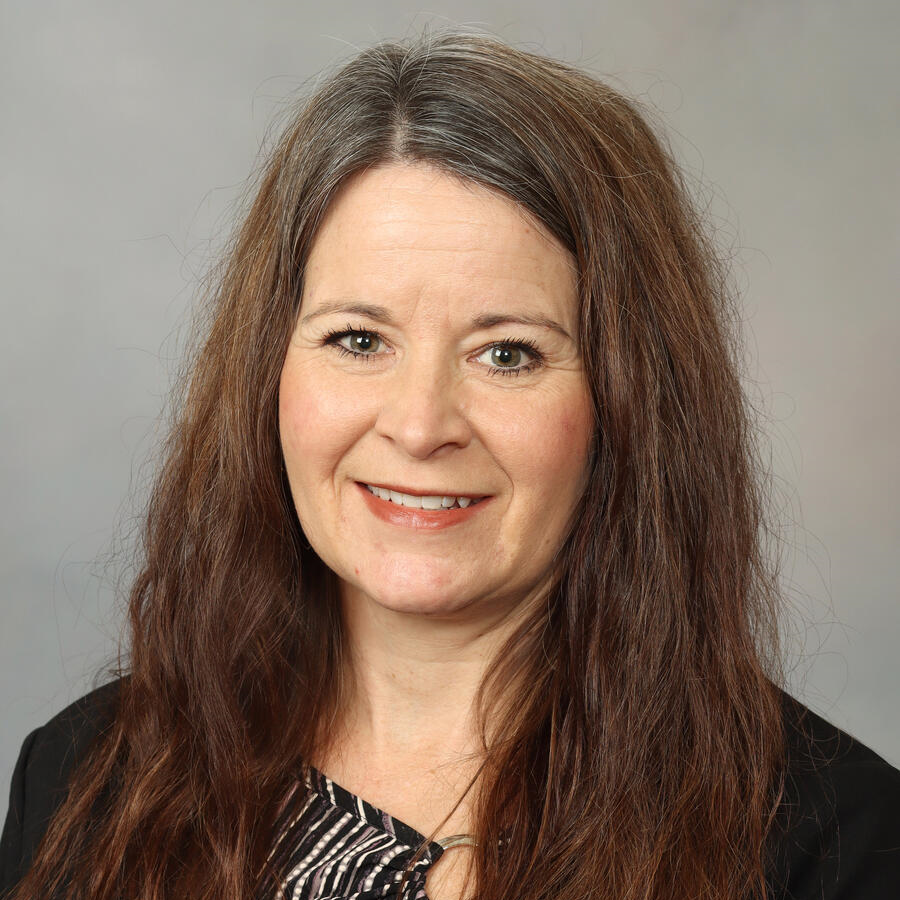
|
Jodi Larson, P.E.
Section Head in Facilities Project Services
Mayo Clinic
Jodi Larson is a Section Head in Facilities Project Services at Mayo Clinic in Rochester Minnesota. She has enjoyed 23 years working on the delivery of projects and in recent years, leading the construction and project management team. Jodi has a B.S. in Geological Engineering from UW-Madison and an M.S. in Environmental Engineering from Milwaukee School of Engineering. As such, a portion of her role also include Environmental Compliance for Mayo Clinic in Rochester.
|
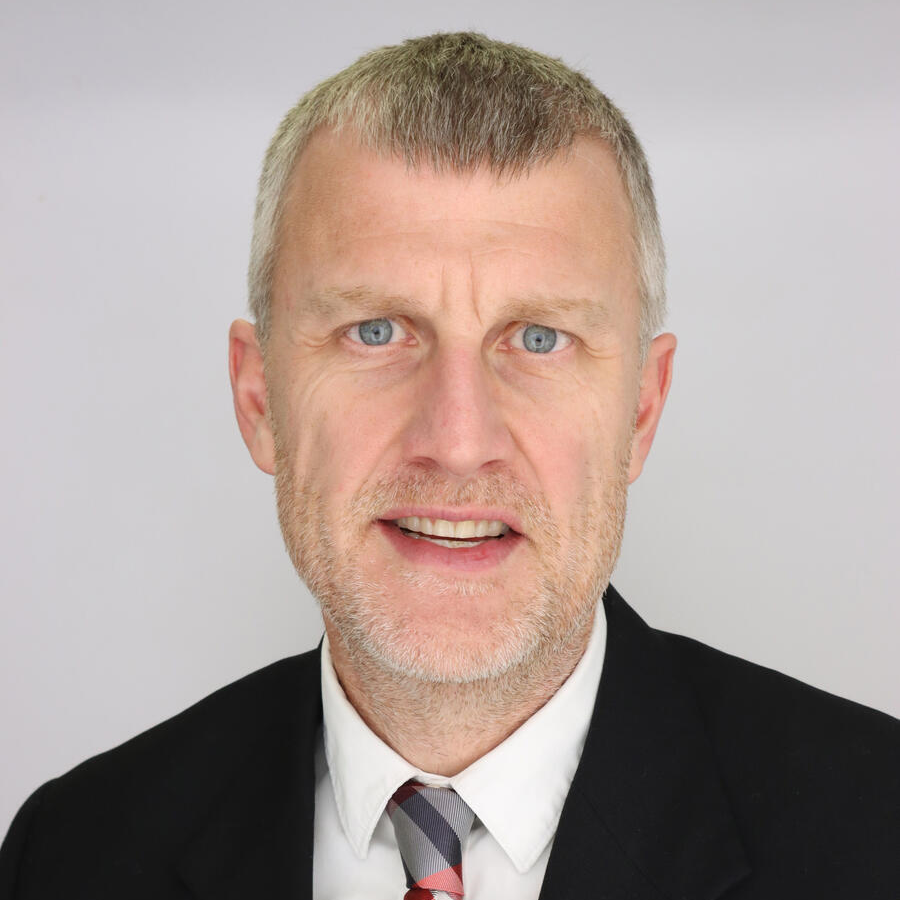 |
Jack Rol
Project Manager in Facilities Project Services
Mayo Clinic
Jack Rol is a Project Manager in Facilities Project Services at Mayo Clinic in Rochester Minnesota. Jack has been in the construction industry for over 25 years, holding a variety of positions on both the owner and contractor side. Jack as a B.S. in Psychology and Education from the University of Nebraska and later secured his Master Electrician license. He is leading the major infrastructure portfolio for Mayo Clinic’s expansion. The wonderful people and relationships cultivated over those 25 years is why he has stayed in the industry.
|
Session 5.3 C
Energy | Special Siting Considerations for Small Modular and Advanced Nuclear Reactors
12:30 PM – 1:00 PM
| About the Presentation |
|
Many have postulated that the U.S. cannot meet carbon reduction or net-zero carbon goals without a significant increase in new nuclear power generation. Today, nuclear power in the U.S. is generated in large gigawatt scale reactors, including the two most recent reactors located near Augusta, Georgia that came on line in 2023 and 2024. However, while more new large reactors have not been ruled out of our future energy mix, small modular reactors (SMR) and small advance nuclear reactors are expected to play a significant role. A unique feature of these smaller reactors is that they have risk profiles that allow for the consideration of construction much closer to population centers and other industrial sites. But what does that mean with respect to compliance with regulations and policies established by the US Nuclear Regulatory Commission (NRC) and the evaluation of impacts in accordance with the National Environmental Policy Act (NEPA)?
This paper will focus on several key aspects of siting SMRs, micro-reactors, and other advanced reactors especially when considering reactors that may be needed close to industrial, commercial, defense, or residential areas. One such siting consideration is the application of exclusion area boundaries and low population zones that are significantly smaller than those established for the existing nuclear fleet of large light-water reactors. When the NRC's regulations were written, the siting restrictions were aligned with the potential radiation doses to the public following a design basis accident. However, small reactors with advanced fuels and new technologies have a risk profile and accident release source term that leave the old distance-based and population-based siting policies without a technical basis grounded in health and safety impacts to the public.
Also, some new advanced reactors do not rely on water for cooling and thus their environmental impacts and design considerations shift from those that are primarily based on ecological and/or water use impacts to other priorities. Advanced reactors also operate at low pressures and do not require traditional thick reinforced concrete containment structures which help lower construction costs. However, now with a smaller exclusion zone around the reactor, there may be nearby hazards, such as an airport or stored chemicals, that now need to be considered and could have a negative impact on construction costs. A final analysis will look at the NRC's new draft Generic Environmental Impact Statement for Licensing New Reactors (September 2024) and how the generic evaluations will be applied to new SMRs and advanced reactors to streamline the NEPA process.
Learning Objectives|
To inform other environmental professionals about special challenges faced in siting new small nuclear reactor compared to many of the "selling points" of these energy sources.
|
| About the Speaker(s) |
|

|
Kevin Taylor, Certified Health Physicist
Manager, Nuclear and Radiological Services
AECOM, Environmental Planning and Permitting Practice
Mr. Kevin Taylor is a Certified Health Physicist with 30 years of experience in nuclear licensing and radioactive materials management. He is the Manager of AECOM's Nuclear and Radiological Services Group based in Greenville, SC. In this role he leads pursuits and client relations in the growing advanced and small modular reactor deployment market. In the SMR and nuclear market, Mr. Taylor has worked with Kairos Power, Ultra Safe Nuclear, X-Energy, Tennessee Valley Authority, Duke Energy, and others. Mr. Taylor has also consulted with the International Atomic Energy Agency (IAEA) following the Fukushima nuclear disaster and has supported the Electric Power Research Institute (EPRI) with the 2022 revision of EPRI's nuclear power Siting Guide which considers small and advanced reactors.
|
Session 5.4 A | CANCELLED
CANCELLED | Transportation | FDOT's Response Along SR A1A Following Two Hurricanes
11:30 AM – 12:30 PM
| About the Presentation |
|
Hurricane Matthew decimated portions of SR A1A in 2018. Following repairs, FDOT addressed the bigger question with hurricane resilience, it's not "if it's "when". The Hurricane Matthew response included a team effort between engineers, scientists, regulators, local government officials, and the public. It was not without concern that the improvements would be worth it or would even work to repair the road and not adversely affect nesting sea turtles. Following the repair, sea turtle nesting increased due the enhancement made to the adjacent dune system. When Hurricane Ian arrived in 2022, the only portions of SR A1A that failed were outside of the areas of the resiliency improvements. FDOT again went to the public to address the roadway failures and were met with a different response than following Matthew. Support for resiliency improvements matching those following Matthew was strong from all stakeholders. Building on the success of the Hurricane Matthew project, FDOT, under NEPA assignment, consulted with USFWS in record time, allowing the next phase of hurricane resilience projects to continue.
Learning Objectives:
- Communicate the value of interagency partnerships
- Innovative approaches to resiliency
- Opportunities for habitat enhancement
- ESA Consultation workflows
|
| About the Speaker(s) |
|

|
Jason Houck, GISP, PWS
Ecology Team Leader
Ardurra, Inc.
Jason Houck, PWS, GISP, serves as the Ecology Team Leader for Ardurra in Orlando, Florida. He has served as a senior ecologist on projects throughout Florida and Tennessee for over 20 years. He received his BS and MS at the University of Tennessee where he studied the effects of acid mine drainage on plethodontid salamanders. Current work is focused on landscape ecology and roadway corridor analyses pertaining to wildlife movement and corridor permeability along with NEPA compliance and environmental permitting for transportation projects.
|
|
|
Casey Lyon
|
Session 5.4 B
Transportation | Whitetail Whispers; North Idaho Wildlife Crossing Study
12:30 PM – 1:00 PM
| About the Presentation |
|
The 32-mile "Garwood to Sagle" (G2S) segment of US95 runs through the panhandle of Idaho between Coeur d' Alene and Sandpoint and has long been recognized by the Idaho Transportation Department (ITD) and Idaho Department of Fish and Game (IDFG) as a hotspot for animal/vehicle collisions. In 2022, HDR was hired by ITD to re-evaluate wildlife movements in the G2S corridor, and based on the results of the movement study, recommend potential mitigation strategies to be implemented with future reconstruction efforts. The project team reviewed and analyzed existing animal/vehicle crash and roadkill data, traffic volumes, land ownership and land use adjacent to the highway, big game movement data from IDFG, and identified protected lands in the study area. HDR and ITD also completed a large scale (40+) deployment of remote sensing wildlife cameras to capture wildlife movements within and across US95 in the study area.
Over the course of the 16-month data collection period, the project team captured and processed more than 100,000 photos of wildlife, including deer, elk, moose, mountain lion, bobcat, coyote, turkey, and other small mammals. Study results were driven by three main datasets: Wildlife-Vehicle Conflicts (WVCs), predicted wildlife connectivity based on a Linkage Mapper model output, and the collection of real-time wildlife movement data through the camera trap study. Study results have helped the project team identify areas within the corridor where WVC mitigation, such as wildlife crossings and wildlife fencing, are warranted and are recommended to be included with future ITD projects. This presentation will describe the process the HDR team completed for the study, focusing on the collection, analyses, and implementation of the three datasets described above. The project team hopes that our experience on this project can help inform other states and studies interested in the intersection between transportation planning and wildlife movement and connectivity.
Learning Objectives
This presentation will describe the process the HDR team completed for the study, focusing on the collection, analyses, and implementation of the three datasets described above. The project team hopes that our experience on this project can help inform other states and studies interested in the intersection between transportation planning and wildlife movement and connectivity.
|
| About the Speaker(s) |
|
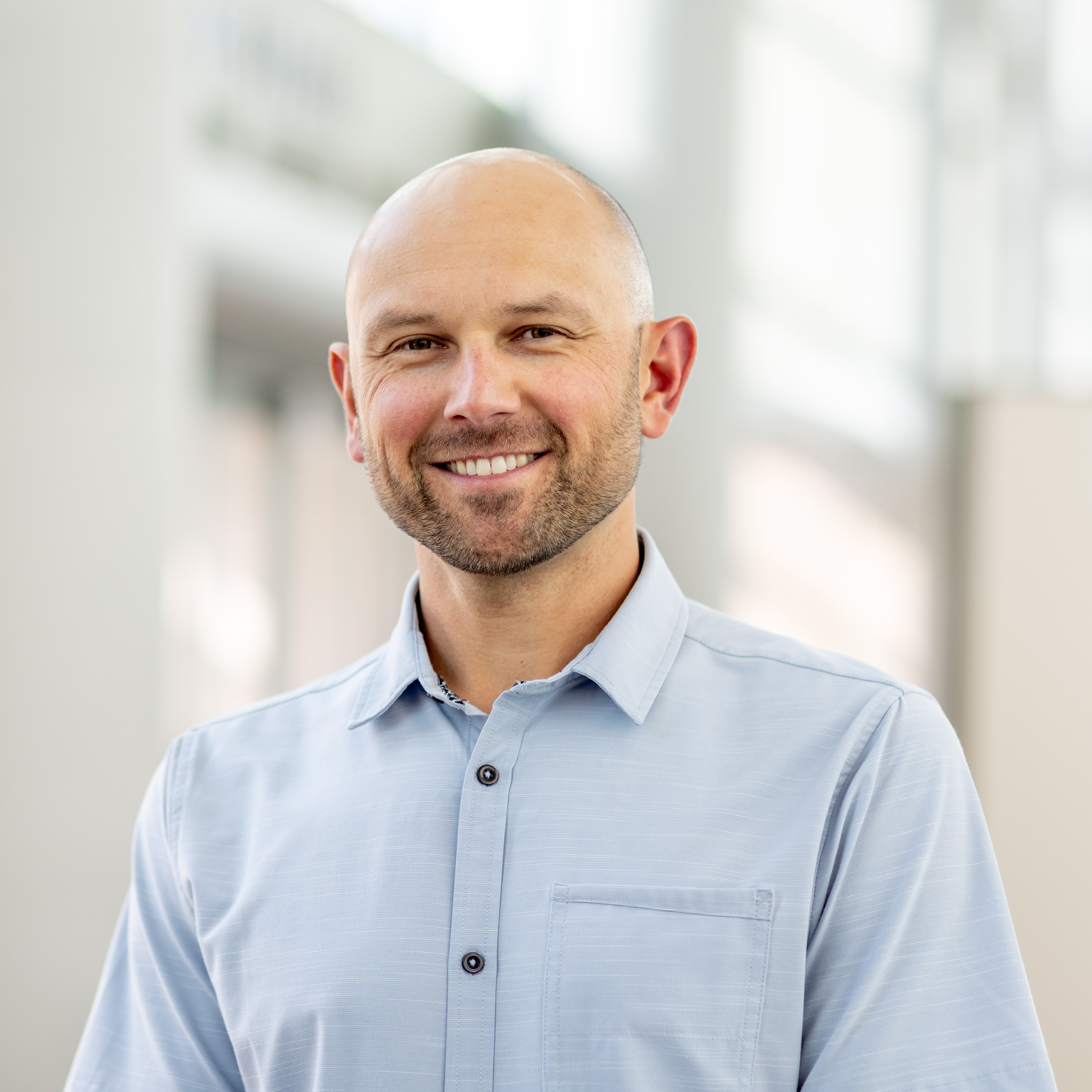
|
Daniel Baker, PE
North Idaho Transportation Lead
HDR
Daniel leads HDR’s Coeur d’Alene, Idaho Transportation design group. Daniel has 17 years of experience in the engineering industry and focuses on transportation and bridge projects for state and local clients.
|
Back to Schedule
|